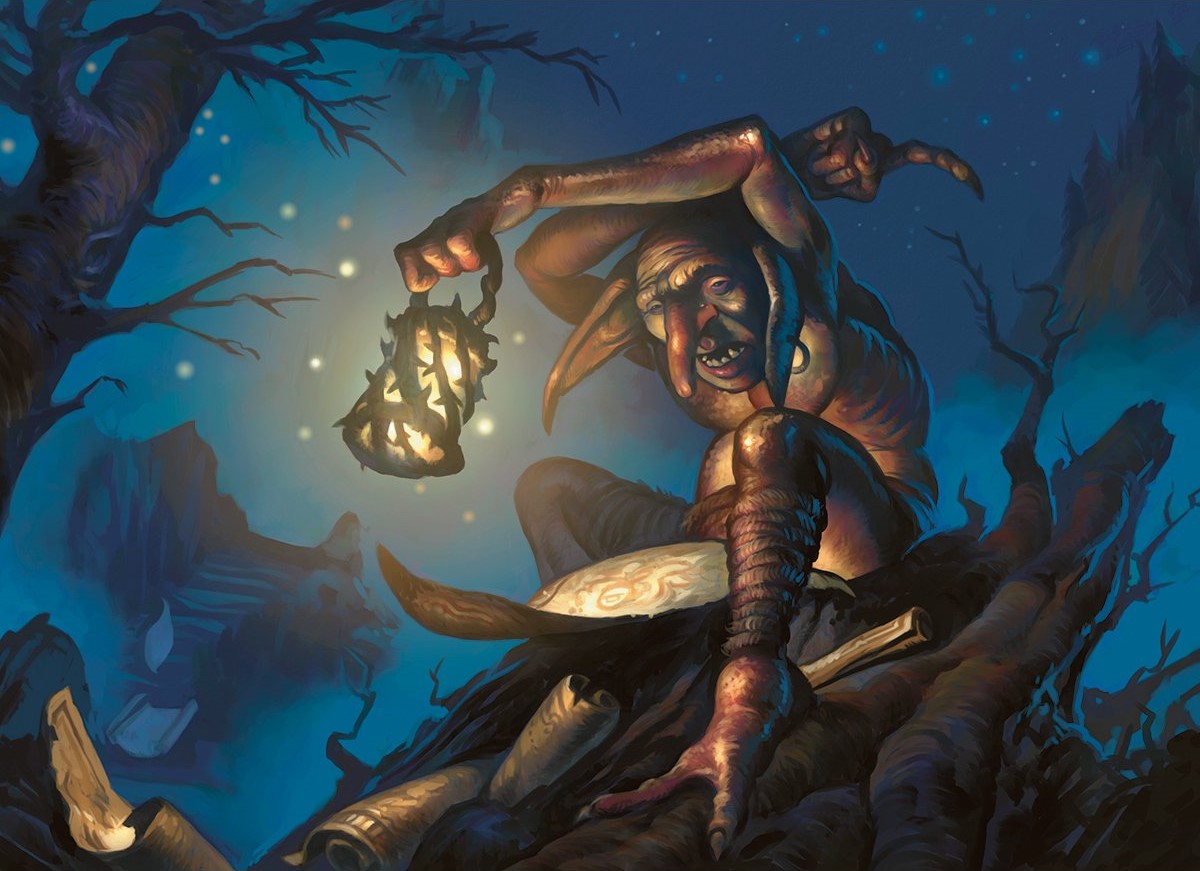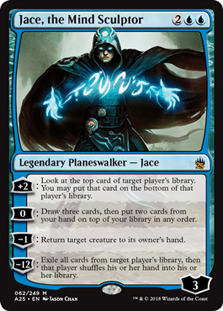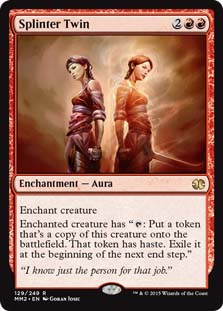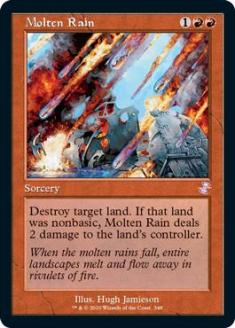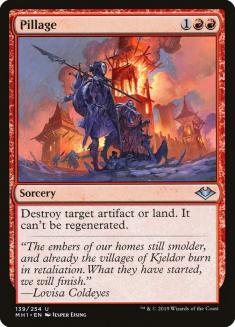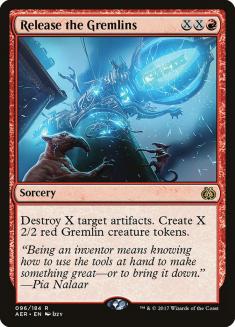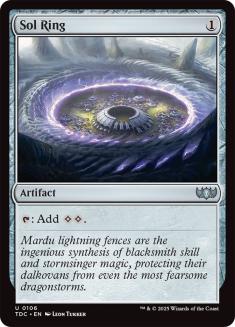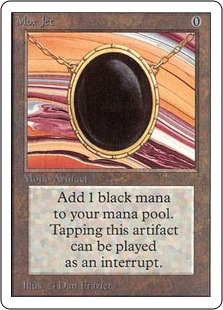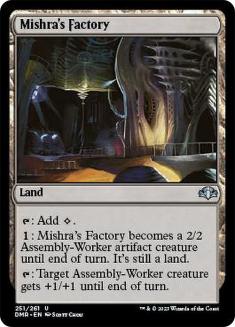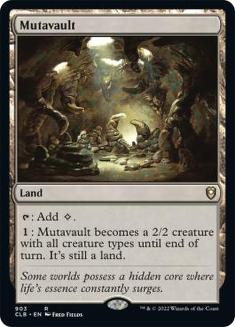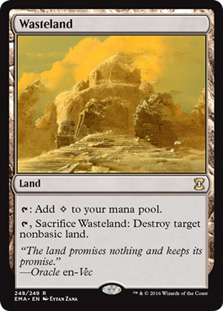The other day I polled Twitter for topic suggestions, and more than one reply related to facilitating aggressive strategies in Cube. I personally really enjoy drafting aggressive Cube decks, and I think there are quite a lot of considerations that go into making them work, some of them as a player, but more of them as a designer. After all, it is the role of the Cube designer to set players up for success.
One of the major pitfalls in designing aggressive decks for Cubes is understanding that aggressive strategies revolve more around quantity than quality. There’s some very relevant subtext in this query that I received:
Make no mistake, Goblin Guide is a solid card, but when it comes to Cube Draft it belongs to a generally weak category. Many Cubes, especially if we’re talking about Vintage Cube, contain a wide range of cards that are or have been banned across multiple Constructed formats. Creatures that only attack and block don’t get banned. For all of the attention that Goblin Guide gets for being arguably the best aggressive red creature of all time, it’s important to remember that it comes from a Standard era where it was playable, but not format-defining.
I don’t know what kind of Cube environment JB was referring to in their question, but it absolutely does matter how good Goblin Guide is. If I draft a Jace, the Mind Sculptor for my deck, there is a chance that I will be able to steal some games by casting it regardless of what the rest of my deck is up to. Any game that Goblin Guide wins on its own likely has to do with a fail rate on the opponent’s end.
It’s just a matter of arithmetic, really. It takes ten hits from a Goblin Guide to deal twenty damage, and your opponent will do everything in their power to stop that from happening. Sometimes your opponent will have a Fatal Push. Sometimes they’ll have a Kitchen Finks. Sometimes they’ll just combo you out. Really, a lot of what the opponent could get up to is bad news for aggressive decks.
When my Grixis Cube got its run on Magic Online (MTGO) I got a lot of positive feedback relating to the fact that a wide range of archetypes all felt viable in the environment, with red aggressive decks being among that spread. Including the most powerful individual cards for these decks is important in supporting them, and Goblin Guide is indeed in the conversation for best aggressive on-mana creature ever printed. That said, I’m confident that I could pick out a hundred or so individual cards in the Cube that are more powerful than Goblin Guide when we look at power in more abstract terms.
Now’s the part where I show my age and reference Philosophy of Fire. The Philosophy of Fire is one of the best-known Magic articles ever written, and from its text we can infer some useful information about seeding beatdown decks in Cube. The long and short of it is that to make beatdown decks work you need to offer a lot of cards that can, one way or another, translate to a Shock. Designing a Cube is a bit different from building a deck, so rather than evaluating individual cards, we have to come up with a list of cards that will realistically leave about two drafters with the ol’ stack-o’-Shocks.
Aiming to have two drafters in the beatdown role might seem somewhat arbitrary, but I believe this is the minimum target to realistically have these decks consistently function, the reason being that the strength of aggressive decks comes from the fact that they’re trying to translate all of their cards into damage. Goblin Guide is considerably weaker than Ponder, but if you’re casting Ponder, you’re probably looking for something specific. The strength of aggressive decks tends to be that most of their cards are broadly interchangeable, and on an average turn drawing any of their spells will allow them to continue advancing their gameplan.
The aggressive drafter isn’t made to believe that Bomat Courier is more powerful than Animate Dead, but rather that taking a Courier and wheeling a Viashino Pyromancer from the same pack will lead to a more consistent deck. Setting up wheels like this is difficult if there isn’t enough aggressive support for two drafters, given that there will need to be at least three passable aggressive cards in a pack for any one player to end up with two of them.
Some Cube archetypes are easily supported by a small number of cards. You can dramatically alter the way a deck plays by adding an Upheaval to it. Splinter Twin combo can fit into a variety of shells. Sneak Attack and Recurring Nightmare are not unlike one-card combos. Further, cards of this nature close games incredibly quickly when they show up, which increases the pressure on aggressive decks to close games quickly and efficiently.
You just can’t aim to add a small number of cards to make aggressive decks work the way you would with cards of this nature, and attempting to do so and aiming for one aggressive deck at the table is the most common pitfall I see when it comes to supporting aggressive archetypes. Sulfuric Vortex will rarely carry you to victory on its own, and the aggressive decks desperately need all of their spells to be efficiently working towards the same goal.
A lot of the cards that I’ve mentioned are Legacy and Vintage Cube monsters, but it takes a lot less than a Griselbrand to outgun the average beatdown deck. It’s important to consider that cards like Collective Brutality and Wrath of God are basically hate cards against aggressive strategies. You definitely want to have these types of cards around to stop aggressive decks from being completely dominant, but their presence is another factor that amplifies the need to make sure that aggressive decks get all the playables that they need.
Beyond that, I personally advocate for giving aggressive decks hate cards of their own to swing this balance somewhat back in their favor. In Grixis Cube this took the form of both artifact destruction and general mana denial.
If I cast Goblin Rabblemaster and you cast Urza, Lord High Artificer the game is likely to slip away from me quickly. But if I keep you in the phase when you can’t cast your most powerful cards, I have a good shot at stealing the game from you. Similarly, Eidolon of the Great Revel and Zealous Conscripts are very common Cube inclusions for their ability to cut through combo decks and large creatures, respectively. This is also why I consider Strip Mine to be among the highest picks for aggressive decks in Vintage Cube. Aggressive decks thrive on denying opponents a shot at the late-game.
Another common pitfall is including too many cards that other decks want, thus reducing the aggressive player’s ability to wheel something for their deck. Char is a great burn spell to support aggressive strategies given that the drawback is undesirable for other decks. Conversely, Lightning Strike is a better fit for controlling decks and Thousand-Year Storm combo decks than it is for aggro given that those decks care less about the card’s relative inefficiency. Aggressive decks want almost every cheap creature more than Lightning Strike, and they’re also unlikely to get Lightning Strike on the wheel given that other archetypes value the card more highly. I removed all of the Incinerate clones from Grixis Cube some time ago, and I believe their presence in the MTGO Vintage Cube to be more of a subtle detriment to aggressive decks than anything.
Of course, it is also true that a general stigma against aggressive decks exists in some circles. It took me several iterations to get people interested in drafting Humans in Spooky Cube. There are a few options that I suggest for addressing this stigma.
One option is to offer some overlapping themes and interesting combos for the aggressive decks. The Grixis Cube offers some cool setups with Reckless Bushwhacker and Devastating Summons which some consider generally more satisfying than the average aggressive deck. The sacrifice theme powered by cards like Yawgmoth, Thran Physician and Goblin Bombardment also gives players powerful, non-traditional reasons to take the aggressive creatures. Spooky Cube similarly offers a sacrifice theme, and the Rally the Ancestors deck is somewhat commonly an aggressive deck that features a one-card combo finish.
Another approach that I like is gassing up the aggressive decks, forcing them, and beating your friends into the ground. Forcing archetypes is a strategy I commonly employ in my own Cubes to make sure that everything that I’m trying to support works, and this methodology also gives you really useful information about whether you have supported the beatdown decks as well as you hope you have. If the problem is rooted in them not respecting the power level of the aggressive decks, then some losses ought to cause them to reflect on their assessment.
If that fails and your friends are willing to draft non-functional decks to avoid playing aggressive ones despite consistent losses to the beatdown decks, then it’s time to take a step back and consider that the reason we build Cubes is for the fun of the group. A healthy metagame doesn’t require control, combo, and aggro, and if players won’t draft Dauntless Bodyguard you don’t have that anyway.
The overwhelming majority of Cube drafts are played for small stakes or no stakes. As such, facilitating a fun play experience is more important than a balanced one. A poorly balanced environment can be a detriment to fun, but an unfun environment makes balance irrelevant. For some groups it’s going to be more work than its worth to make the beatdown decks work, and I’d hardly consider their presence to be a necessary condition for a functional Cube.
That said, if your playgroup has a rotating cast of players or if you’re trying to design for a wide audience, I would advise giving aggressive decks proper support so as to appeal to the widest range of preferences. I personally love attacking, so it’s unlikely that you’ll see me removing aggressive decks from any of my Cubes.
Finally, I’d like to highlight a 3-0 aggressive deck that I drafted this week on the MTGO Vintage Cube to shine further light on the topics discussed today.
Creatures (14)
- 1 Goblin Guide
- 1 Hellrider
- 1 Thundermaw Hellkite
- 1 Young Pyromancer
- 1 Eidolon of the Great Revel
- 1 Goblin Rabblemaster
- 1 Monastery Swiftspear
- 1 Zurgo Bellstriker
- 1 Abbot of Keral Keep
- 1 Bomat Courier
- 1 Glorybringer
- 1 Hazoret the Fervent
- 1 Soul-Scar Mage
- 1 Earthshaker Khenra
Lands (15)
Spells (11)

There are some cool synergies going on here, and this was a fun deck to play. If you asked me what the five most powerful cards in the deck are, they would be the following:
Similar to how Wasteland is the best “Goblins” card in Legacy, the red cards in this deck are mostly getting there on volume. Obviously Mox Jet and Sol Ring are going to rank highly in terms of best card in any deck, but I think it’s valuable to highlight that the creatures hiding in the manabase and the free piece of mana denial are among the least replaceable cards here.
I first-picked Monastery Swiftspear in this draft out of a medium pack, but the highlight is more that I have five total one-drops than the value of any individual one of them. The real value in first-picking the Swiftspear was in the near-guaranteed wheel of Earthshaker Khenra. This is far from the best home for a Sol Ring, but once I identified that the lane was open I was able to put together a deck that would consistently come out of the gates swinging and force my opponent to do something better. This deck almost had its run ended singlehandedly by an Elder Gargaroth (a powerful hate card), but I was ultimately able to get there off the back of Glorybringer and Fireblast.
I’ve made the case a number of times that the current build of the MTGO Vintage Cube better supports mono-white than mono-red, and this is largely because a higher volume of the white cards are replacement-level cheap creatures that attack and block or catch-all interaction. And that’s really where the strength lies. Sometimes I first-pick Tinker and, in an admittedly extremely unlucky turn of events, end up with a deck that isn’t great at leveraging it. As this rock-solid mono-white draft by Liz Lynn evidences, it’s not hard to end up with a strong supporting cast for Legion’s Landing.
Creatures (13)
- 1 Mother of Runes
- 1 Flickerwisp
- 1 Leonin Relic-Warder
- 1 Blade Splicer
- 1 Porcelain Legionnaire
- 1 Spirit of the Labyrinth
- 1 Kytheon, Hero of Akros
- 1 Thraben Inspector
- 1 Adanto Vanguard
- 1 Tithe Taker
- 1 Giver of Runes
- 1 Eidolon of Obstruction
- 1 Seasoned Hallowblade
Planeswalkers (1)
Lands (17)
Spells (9)

I love Mana Tithe and there are a few great interactive spells here. Ultimately though, the strength is that there are a lot of one- and two-mana creatures which you can always rely on to pressure the opponent’s life total. This deck isn’t winning easily on the back of Blade Splicer, but it’s consistently doing its thing because you can always rely on the other white creature with power and toughness to come back around in the draft.
It’s easy to go overboard with more expensive spells in a Cube, and spells that cost four or more are far more likely to end up going unplayed than cheap creatures if the aggressive decks are well-supported. As Cube designers, the best way to support aggressive decks is making sure to include a high volume of cheap threats, and as drafters our best bet on winning with aggressive decks is to make sure that we’re able to wheel efficient threats so that we can convert most of our cards into relevant damage.
Throw enough one-drops at any problem and it should go away. At the very least, there’ll be more one-drops.

